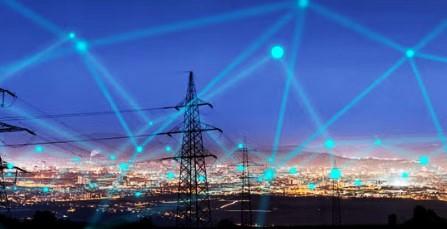Argentina is emerging as a key player in South America’s evolving energy landscape, with its electric power sector attracting increasing attention from investors and industry stakeholders. BNamericas highlights the country’s expanding opportunities amid a strategic push towards renewable energy integration, infrastructure modernization, and regulatory reforms designed to boost capacity and reliability. As Argentina seeks to balance rising demand with sustainable development goals, the electric power market presents a dynamic environment ripe for domestic and international participation. This article explores the current trends, challenges, and potential that define Argentina’s electric power sector today.
Spotlight on Argentina’s Growing Demand for Renewable Energy
Argentina is rapidly reshaping its energy landscape as the country’s renewable energy sector experiences unprecedented growth. With government policies increasingly favoring clean power sources, Argentina has become a hotspot for investments in wind, solar, and hydroelectric projects. The rising demand is fueled not only by environmental commitments under international agreements but also by the need to diversify an energy matrix long dependent on fossil fuels and hydropower. The push towards renewables aims to address both sustainability goals and energy security challenges by tapping into Argentina’s vast natural resources.
Key drivers supporting this transition include:
- Attractive feed-in tariffs and auction schemes encouraging private sector participation
- Improvements in grid infrastructure to integrate variable renewable generation
- Strategic partnerships with multinational firms bringing technology and capital
- Growing domestic demand for reliable and clean electricity from industrial and residential sectors
| Renewable Source | Estimated Growth (2024-2030) | Top Investment Regions |
|---|---|---|
| Wind | 12 GW | Patagonia, Buenos Aires |
| Solar | 9 GW | San Juan, La Rioja |
| Hydro | 3 GW | Mendoza, Misiones |
Key Challenges and Policy Developments Shaping the Electric Power Market
Argentina’s electric power market is currently navigating a complex landscape marked by fiscal constraints, aging infrastructure, and fluctuating regulatory frameworks. The challenge of balancing energy affordability with the need for modernization is pressing, as state-owned utilities grapple with debt while private investors seek greater clarity and stability. Additionally, the country’s reliance on fossil fuels juxtaposed with ambitious renewable energy targets generates tension across policy and market dynamics. Efforts to expand grid capacity and enhance energy storage are underway but require strategic coordination to avoid bottlenecks and ensure reliability amid rising demand.
Government initiatives have recently focused on incentivizing clean energy projects through a revamped tender system, streamlined permitting processes, and enhanced regional interconnections. Key policy reforms under discussion include:
- Increased subsidies for renewable generation to accelerate wind and solar deployment.
- Market liberalization measures aimed at fostering competition and private sector participation.
- Regulatory adjustments to encourage grid modernization and digitalization.
| Policy Aspect | Current Focus | Expected Impact |
|---|---|---|
| Renewable Momentum | Incentives & quota expansion | 30% increase in clean energy capacity by 2026 |
| Grid Modernization | Smart grid pilots | Improved efficiency and outage management |
| Market Dynamics | Private investment facilitation | Reduced dependency on public funding |
Strategic Recommendations for Investors Eyeing Argentina’s Power Sector
Investors looking to capitalize on Argentina’s dynamic electric power landscape should prioritize partnerships with local firms to navigate the complex regulatory environment. Understanding the government’s commitment to renewable targets, particularly solar and wind, can unlock avenues for long-term growth and social impact. Additionally, monitoring currency fluctuations and inflation rates remains crucial, as these macroeconomic factors heavily influence project profitability and investment timelines.
Key strategic actions include:
- Targeting renewable energy auction cycles: Align investments with upcoming government auctions to secure favorable contracts.
- Assessing distributed generation prospects: Explore off-grid and microgrid technologies responsive to rural electrification needs.
- Leveraging financing frameworks: Utilize international green funds and local incentives designed to encourage sustainable energy deployment.
| Investment Focus | Opportunity | Timeframe |
|---|---|---|
| Solar PV | High growth driven by auction incentives | Short to Medium Term |
| Wind Energy | Strong potential in Patagonia region | Medium Term |
| Energy Storage | Emerging It looks like your message got cut off after “Energy Storage” under the Opportunities column in the table. Would you like me to help complete the table entry or assist you in any other way related to the investment overview on Argentina’s electric power sector?
In SummaryAs Argentina continues to navigate its energy transition, the electric power sector stands out as a key frontier for investment and innovation. With government initiatives aimed at expanding renewable capacity and modernizing infrastructure, the market presents compelling opportunities amid ongoing economic challenges. For stakeholders keeping a close watch on Latin America’s energy landscape, Argentina offers a dynamic environment where strategic engagement could yield significant returns. BNamericas will continue to monitor developments in this evolving sector, providing up-to-date insights for industry professionals and investors alike. |




